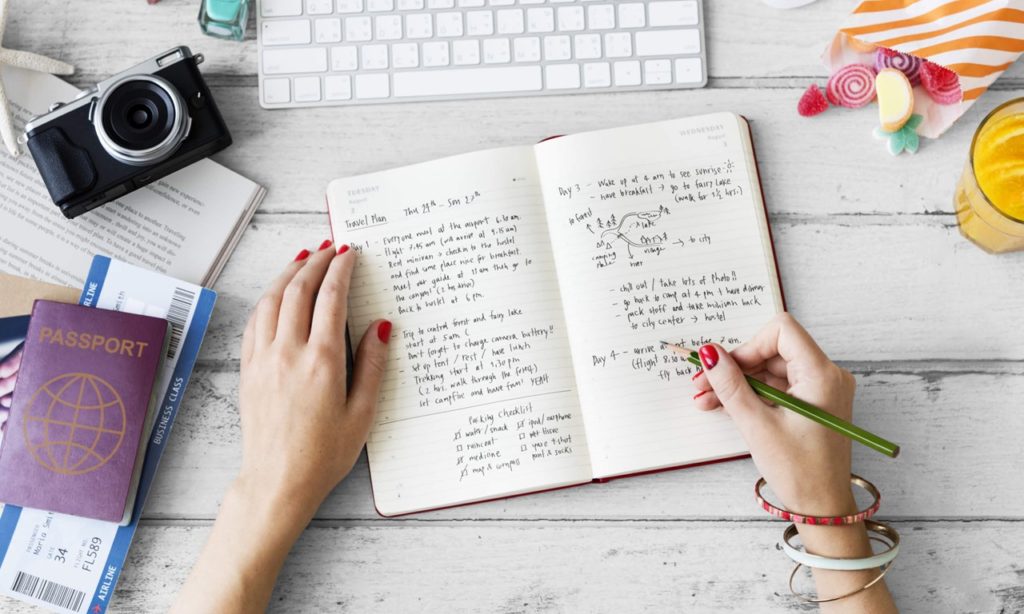
Originally published on LinkedIn in August 2019

Ever wonder what’s the difference between a well-read travel story and a barely-read one? Well, it’s not luck nor is it random. It’s all in how you choreograph the flow of your article.
Even the best writer out there often finds it difficult to convey the full magnitude of their experience. You can write a hundred lines explaining the magic combination of wind blowing through your hair after a tiring hike, the spectacular view, or the smell of crisp fresh air. But reality is, most often than not, these things can only be felt.
I believe that’s the pitfall of many. The best story you could write isn’t a detailed explanation of what you saw, rather what you as a traveler experienced, learned, and a few tips mixed in.
Begin from the middle
An average reader decides to read an article or turn the page within 5 seconds (not an exact science). That’s why you always need to begin with a captivating opening.
To help immerse readers in my story I often skip the very beginning of my adventure and start somewhere around the end of the first day.
In Nubia, for example, I dropped the whole commute there and began from my coffee with the groundskeeper. While in the Eastern Desert I skipped the first 30+ hours and started from our first campfire.
Plant a question
Another great trick is to ensure that your opening plants a question in the reader’s mind.
“I should have warned Sarah before we sat down with Gabrey.” It may not be the best opening, but don’t you want to find out more? Of course you do!
If you only take away one thing from this article this is it. Keep your openings captivating.
Here is another example of the question-style opening: Egypt’ Baris
It’s a story
Maybe an obvious point, nevertheless it is one that many miss. Your travel article is first and foremost a story. It should have a beginning, a middle that revolves around a quest, and a smooth closing.
Most travel publications—rightfully—request more of a “how-to” piece filled with tips and tricks. This doesn’t mean drop the story element, but rather incorporate the important details into your story.
The purpose of your article is to immerse readers into your experience, help them visualize it and benefit from it as well.
For example, instead of focusing entirely on where you went, the view, and the company of your latest hiking adventure incorporate intriguing bits about the fitness level required from your perspective, how you made sure your water lasted, and so on. Take the reader on the same journey you did, without overwhelming them with details.
Focus on the storyline
Also a crucial ingredient, also often missed. Don’t jump around in your story. If you are writing about your morning tour in Dar Es Salam in Tanzania, don’t start the very next paragraph with you magically making it to Zanzibar. Take the reader with you on the commute—however briefly.
Dropping the links in your adventure dramatically reduces the reader’s ability to relate to your story. You need to keep the reader hooked and foster relatability. Something they won’t be able to do if you interrupt your story with a list of your favorite restaurants.
Time to choose
The previous point doesn’t mean include a detailed catalog of your journey. It is perfectly okay to drop complete excursions from your story, you only have to link the rest, presenting a smooth well-connected story.
The fine balance of feelings
This point is the reason this article has been a draft for over a week now. When editing a travel article I often end up cutting entire paragraphs about the traveler’s perception or feelings. While it is important to share what you felt and your perception of the adventure with the readers, there is a fine balance. No reader is interested in an entire paragraph about how the vastness of turquoise waters made you feel.
That being said, finding the right balance is largely arbitrary and is mostly based on the editor’s experience and style.
End with a bang
Leave the reader wanting more. I, personally, believe it is best to leave the reader at the destination. End the article with a dance in a bar in Vienna or a night of telling stories by a campfire.
Finally, if you have fun writing your article the reader will always feel it. Perhaps that’s the best part of travel articles.
